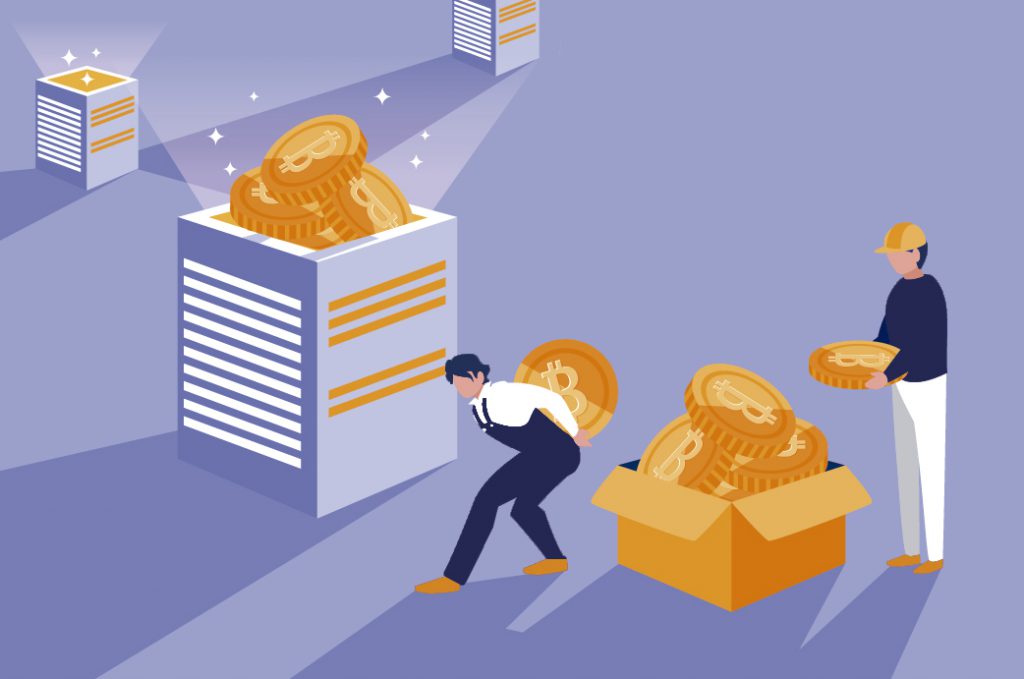
Table of Contents
ToggleOne of the objectives of Bitcoin was establish itself as the alternative to the traditional banking system. How? Making bitcoin (BTC) a decentralized virtual currency. And one of the causes of this decentralization lies in its emission.
Is the number of bitcoins finite?
Satoshi Nakamoto, the person or group of anonymous people who created the Bitcoin protocol, devised a decentralized system thanks to the autonomous issuance of controlled currency. This is a feature highly valued by those people who dare to buy bitcoin online.
Bitcoins are released while granting rewards to miners who create validated transaction blocks every 10 minutes approximately. Of course, the number of BTC that is released is not always the same.
Bitcoin software has established that with every certain number of validated blocks, the rewards are reduced by half. Specifically, every 210.00 blocks the reward is reduced by 50% per mined block. This process is known in the crypto world as halving.
This “penalty” tries to guarantee a constant supply of bitcoins, counteracting the increase in processing power. It would be a penalty equivalent to the advancement of technology that allows to process a larger volume of data in less time.
In this way, the nature of bitcoin makes it a deflationary currency: the issuance of bitcoins is fixed and limited.
When this virtual currency was created, a limit of 21 million BTC was established to avoid inflationary behavior in the currency. Therefore, the number of bitcoins is finite and nobody has complete and direct control over this virtual currency. It is a decentralized cryptocurrency.
Is estimated that in the year 2140 the last bitcoin will be issued. Then, only what is generated by the transaction itself will be obtained as a reward.

The number of bitcoins is finite: Advantages and Disadvantages
Limited bitcoins entails a series of pros and cons.
Advantages:
- The benefit of this currency decentralization is that bitcoins cannot be manipulated.
- Since infinite bitcoins cannot be generated, their value is not devalued and their price stabilizes. Unlike what happens with cash, in which central banks issue unlimited and devalue their value.
Disadvantages::
- Bitcoin is volatile: Due to its limited amount and its growing demand (more and more bitcoin transactions occur).
- For miners, the rewards will be insignificant. However, when the rewards for mining are very low, then the miners must live on commissions derived from confirming transactions.
“Once a predetermined number of coins have entered circulation, the incentive can transition entirely to transaction fees and be completely inflation free”
Satoshi Nakamoto
Bitcoin: A Peer-to-Peer Electronic Cash System (P. 4)
How many bitcoin are there in circulation?
Currently, there are 18,041,462.5 bitcoins. This figure increases every 10 minutes, when new blocks are mined. Right now, each new block adds 12.5 bitcoins in circulation.
It is expected that the next Bitcoin halving will be in May 2020. From then on, each block will be a reward of 6, 25 Bitcoin.
How many bitcoins are left to be mined?
There are 2,958,537.5 bitcoins left to be mined. Approximately 14% of total bitcoins.
Exciting the bitcoin world! However, this is just one of many cryptos you’ll find in the market. Discover how many cryptocurrencies exist today and encourage yourself to buy cryptocurrency faster and safely.








